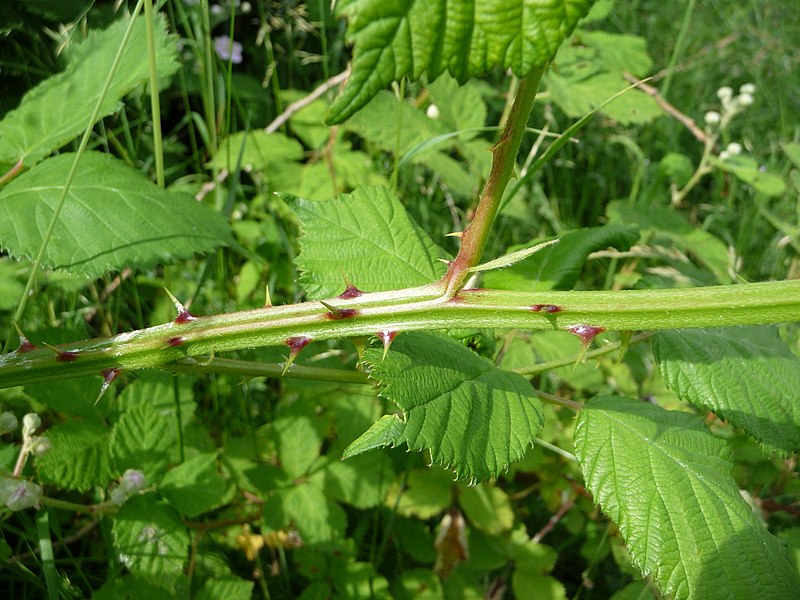How To Eliminate Invasive Himalayan Blackberry Vines in Your Victoria, BC Garden
Effective methods for removal
Need help with your yard? Get your free quote today!
Get a Free Quote!
The Himalayan blackberry (Rubus armeniacus) is a tenacious invader in Victoria, British Columbia. While its berries are undeniably delicious, the plant itself can quickly overrun gardens, displacing native flora and creating impenetrable thickets. If you're looking to reclaim your garden from this aggressive species, this guide will provide you with effective methods to remove it and prevent future invasions.
Understanding the Himalayan Blackberry
Identification
- Canes: Thick, arching stems up to 3 meters tall, covered in sharp thorns.
- Leaves: Large, toothed, and typically in groups of five leaflets.
- Flowers: White to pale pink blossoms appearing in late spring to early summer.
- Fruit: Plump, black berries that ripen in late summer.
Why It's Invasive
Originally introduced for its fruit, the Himalayan blackberry thrives in the Pacific Northwest's climate. It spreads aggressively through seeds dispersed by birds and mammals, as well as through robust underground rhizomes. Its dense growth habit outcompetes native plants, reducing biodiversity.
Mechanical Removal Methods
1. Manual Digging
Best for small infestations.
Tools Needed: Shovel, gardening fork, thick gloves, protective clothing.
Steps:
- Cut back canes to ground level to access the root system.
- Dig around the base of each plant to expose roots.
- Remove all roots and rhizomes; even small fragments can regrow.
Tips:
- Perform during moist soil conditions for easier digging.
- Revisit the area periodically to remove any new sprouts.
2. Cutting and Mowing
Effective for preventing seed production and weakening plants over time.
Procedure:
- Cut canes down to ground level using loppers or a brush cutter.
- Repeat every 2-4 weeks during the growing season.
Limitations:
- Does not remove roots; regrowth will occur without consistent maintenance.
3. Mulching and Covering
Materials: Thick mulch (wood chips, straw), landscape fabric, or black plastic tarps.
Steps:
- After cutting canes, cover the area to block sunlight.
- Secure coverings to prevent displacement by wind or animals.
- Leave in place for at least one growing season.
Benefits:
- Suppresses regrowth by preventing photosynthesis.
- Improves soil conditions for future planting.
Chemical Control Methods
1. Herbicide Application
Use as a targeted approach when mechanical methods are insufficient.
Recommended Herbicides: Products containing glyphosate or triclopyr.
Application Guidelines:
- Apply during active growth periods (spring and fall).
- Cut canes and immediately treat the cut stems to maximize absorption.
- Follow all label instructions regarding dilution and safety precautions.
Environmental Considerations:
- Avoid application near water bodies to prevent contamination.
- Protect desirable plants by applying herbicides carefully.
2. Professional Assistance
Advantages:
- Professionals can safely handle and apply herbicides.
- They may offer integrated pest management solutions.
Biological Control
Grazing
Animals Used: Goats are particularly fond of blackberry leaves.
Implementation:
- Temporary fencing may be needed to contain animals.
- Grazing reduces biomass but may not eliminate roots.
Considerations:
- Suitable for larger properties.
- Requires coordination with local regulations and animal owners.
Preventative Measures
Regular Monitoring
- Inspect your garden frequently, especially during the growing season.
- Remove new sprouts promptly to prevent establishment.
Promote Native Vegetation
Plant Competitive Species: Establish fast-growing native ground covers or shrubs.
Benefits:
- Healthy vegetation can suppress blackberry growth.
- Enhances local biodiversity and ecosystem health.
Proper Disposal
Do Not Compost: Blackberry seeds and roots can survive composting.
Dispose Safely:
- Bag and dispose of plant material according to municipal guidelines.
- Some areas offer invasive species disposal programs.
Legal and Community Resources
Local Regulations
- City of Victoria: May have bylaws regarding invasive species management.
- Capital Regional District (CRD): Provides resources on invasive plant control.
Community Support
- Invasive Species Council of British Columbia: Offers education and may coordinate community removal efforts.
- Local Gardening Clubs: Can provide advice and assistance.
Environmental Stewardship
Protecting Native Species
Avoid Collateral Damage: Be careful not to harm native plants during removal.
Rehabilitation:
- After removal, consider planting native species to restore habitat.
Wildlife Considerations
- Habitat Impact: While blackberries provide some wildlife benefits, their overall impact is detrimental to native ecosystems.
Conclusion
Removing Himalayan blackberry vines from your garden is a challenging but rewarding endeavor. Success requires a combination of persistence, appropriate techniques, and ongoing maintenance. By taking action, you're not only reclaiming your personal space but also contributing to the preservation of Victoria's native ecosystems. Remember, patience is key—eradicating this invasive species may take several seasons, but the long-term benefits to your garden and the environment are well worth the effort.
